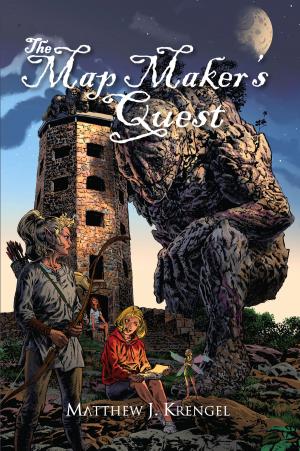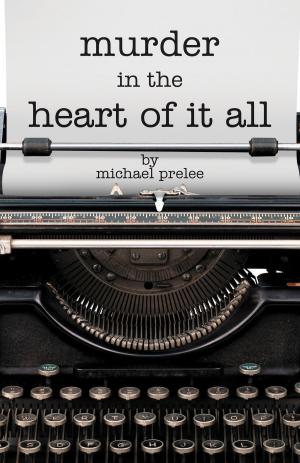| Author: | Perry Trouche | ISBN: | 9781932842647 |
| Publisher: | Star Cloud Press | Publication: | May 18, 2009 |
| Imprint: | Star Cloud Press | Language: | English |
| Author: | Perry Trouche |
| ISBN: | 9781932842647 |
| Publisher: | Star Cloud Press |
| Publication: | May 18, 2009 |
| Imprint: | Star Cloud Press |
| Language: | English |
A TIME MACHINE COULD TAKE US NO CLOSER! Synopsis of The Mule Shoe by Perry Trouche Give a nearsighted child glasses for the first time and what you'll hear immediately is "I can see the leaves". This sudden clarity strikes the protagonist Conner DuMont in the final chapter of The Mule Shoe but it comes with a price. The dogma, promises and tradition of the past are gone. He can no longer go on doing things the way they have always been done. With this change comes awareness of his conformity and acquiescence to a society built on evil. The Mule Shoe is Conner's journey through his subconscious that takes him, past and present, through beliefs and memories to final acceptance of a new era built on truth. The trauma of the horror of combat hastens the process. Like the peeling of an onion causing tears, Conner's gradual descent into his mind unleashes emotions that overwhelm reality. The story is set at the battle of Spotsylvania, Virginia, in 1864 during the American Civil War, but Conner's mental journey encompasses his childhood on the sea islands of South Carolina, the recent death of his cousin for which he blames himself, and the fantasy of life through the eyes of the common soldiers he meets. He struggles to stay in the present but death, and the fear surrounding it, propel him into a dream world of memories, real and imagined. His day to day reality is increasingly bombarded with hallucinations in which the significant people of his past and present deliver a running commentary on his life. As the combat worsens at the Muleshoe Salient, he is unable to differentiate reality from delusion. He creates a world of calming touch to replace the insanity of war, readily embracing the delusion of soothing affection to overcome mind numbing savagery. The final acts of killing sever his last tie to his prior life. He retreats physically from battle as he wanders mentally in search of acceptance and peace. As he has learned to kill in reality, he finds he must do the same in his delusional world. The power to kill is the evil on which his world has been built. The final act of killing a childhood friend is so repugnant that it frees him from all attachment to his past. He accepts peace as he would use clear, cold water to rinse an open wound. Hope for life and peace replaces the misery of war. The Mule Shoe is twenty-four chapters, half of which are in the present, June 1864, and half, flashbacks and fantasy. The historical accuracy has been well researched and the emotional journey based on the author's extensive experience as a psychiatrist.
A TIME MACHINE COULD TAKE US NO CLOSER! Synopsis of The Mule Shoe by Perry Trouche Give a nearsighted child glasses for the first time and what you'll hear immediately is "I can see the leaves". This sudden clarity strikes the protagonist Conner DuMont in the final chapter of The Mule Shoe but it comes with a price. The dogma, promises and tradition of the past are gone. He can no longer go on doing things the way they have always been done. With this change comes awareness of his conformity and acquiescence to a society built on evil. The Mule Shoe is Conner's journey through his subconscious that takes him, past and present, through beliefs and memories to final acceptance of a new era built on truth. The trauma of the horror of combat hastens the process. Like the peeling of an onion causing tears, Conner's gradual descent into his mind unleashes emotions that overwhelm reality. The story is set at the battle of Spotsylvania, Virginia, in 1864 during the American Civil War, but Conner's mental journey encompasses his childhood on the sea islands of South Carolina, the recent death of his cousin for which he blames himself, and the fantasy of life through the eyes of the common soldiers he meets. He struggles to stay in the present but death, and the fear surrounding it, propel him into a dream world of memories, real and imagined. His day to day reality is increasingly bombarded with hallucinations in which the significant people of his past and present deliver a running commentary on his life. As the combat worsens at the Muleshoe Salient, he is unable to differentiate reality from delusion. He creates a world of calming touch to replace the insanity of war, readily embracing the delusion of soothing affection to overcome mind numbing savagery. The final acts of killing sever his last tie to his prior life. He retreats physically from battle as he wanders mentally in search of acceptance and peace. As he has learned to kill in reality, he finds he must do the same in his delusional world. The power to kill is the evil on which his world has been built. The final act of killing a childhood friend is so repugnant that it frees him from all attachment to his past. He accepts peace as he would use clear, cold water to rinse an open wound. Hope for life and peace replaces the misery of war. The Mule Shoe is twenty-four chapters, half of which are in the present, June 1864, and half, flashbacks and fantasy. The historical accuracy has been well researched and the emotional journey based on the author's extensive experience as a psychiatrist.















